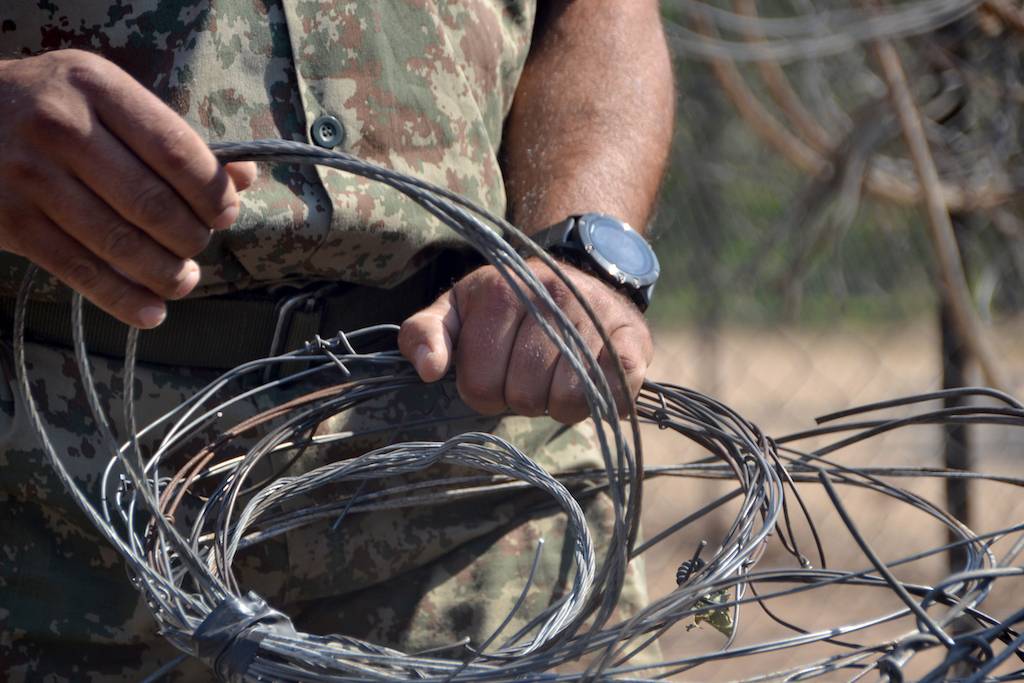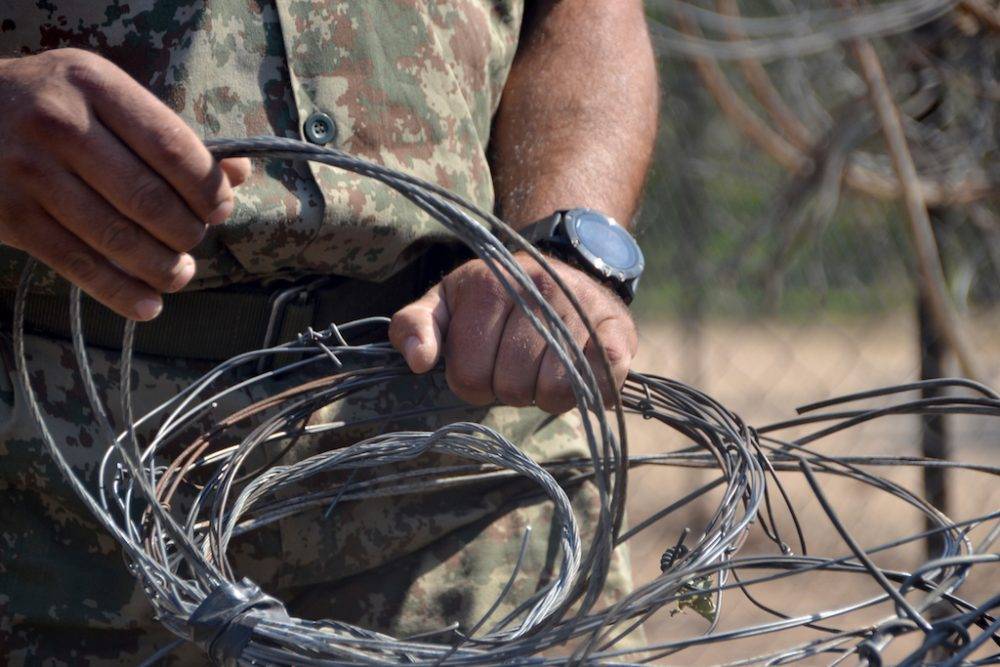
Johan de Beer, the SANParks K9 anti-poaching unit manager, shows the different types of snares found in the national park. Photo: Dianah Chiyangwa
The air is crisp, carrying with it the promise of discovery — a perfect morning for twitchers and game-spotters. Dry leaves crunch underfoot. Then, from a distance, whistles blow and walkie-talkies screech: snare alert! Every 50 metres or so, there’s another one. By the end of the day, 65 snares will have been found and removed along the remote south-western boundary of Kruger National Park.
Snaring is reaching alarming proportions in the national park, with incidents trebling since 2020. Snares sometimes reveal tales of opportunism or desperation, among people eking out a living. But increasingly organised crime plays a role, to an extent, some would argue, that rivals the severity of rhino poaching, particularly in terms of ecological costs.
For many living on Kruger’s borders, harvesting game meat has long been a tradition, a way of life. Teenagers and even younger children join dog hunts and set snares. However, in recent years the resulting bushmeat trade has grown into a significant business, way beyond subsistence trapping for the pot.
“In other words, snaring is not necessarily driven by hunger but has evolved into a commercial business,” says Endangered Wildlife Trust (EWT) senior conservation manager Lourens Leeuwner.
Of late, buffalos have become a prime target for snaring — and elephants, too, are getting trapped. Snares that used to be made of single wire strands to trap small buck like duikers and impalas are now almost as thick as the steel cables used to hoist containers on to ships.
Tracking the true effect of snare poaching proves difficult, since reported figures only represent found animal remains or animals saved from snares. Experts believe that the actual number of affected animals is significantly higher than the recorded figures. Equally, the number of snares found is also a crude measure of the extent of snaring.
Howard Hendricks, executive conservation manager for South African National Parks (SANParks), does not mince words when discussing the severity of the problem. “It’s probably the highest strategic risk in managing the park,” he said.
Snare patrol
On a particularly cold morning, Oxpeckers Investigative Environmental Journalism joined SANParks field rangers on a snare removal operation in Pretoriuskop — a snaring hotspot near the south-western border of the park.
Moving in two groups along straight lines, we covered nearly 6km through thorny bush. Tracks, suspected to be left by poachers, were clear in the dry sand.
Jacques Malan, the snare removal coordinator, said most of the wire used for snares was stolen from the boundary fence. To target big species, including buffalo and elephants, poachers often weave the wire into thick cables. Heavy-duty cable cutters are needed to remove the heavy-duty snares stretched between trees.
On the last stretch of the tiring, sweaty operation, we came across burnt grass. Section ranger Rangani Tsamwani explained that poachers sometimes burn dried grass to frighten animals, driving them towards areas where many snares had been set.
Interviewed after the snare patrol, Don English, regional ranger in Xanatseni North, said that poaching in Kruger used to be mostly a case of chasing down animals with dogs or setting a couple of snares to catch an impala or two for personal consumption. “That’s no longer the case,” said English. “There is no more subsistence poaching, where one does it to survive. It’s done on a large scale, and it’s money driven.”
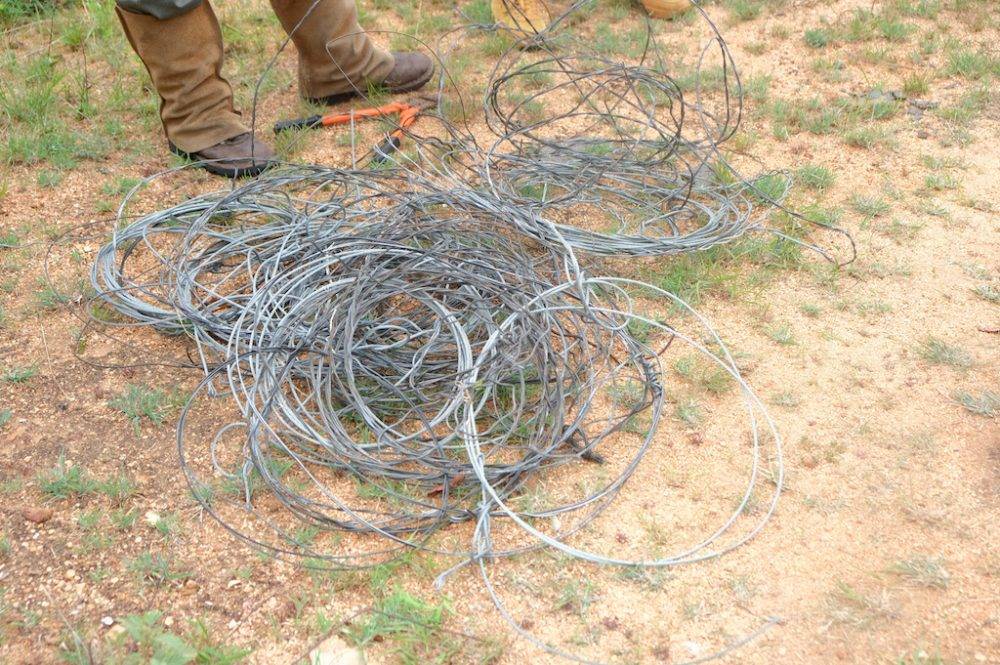
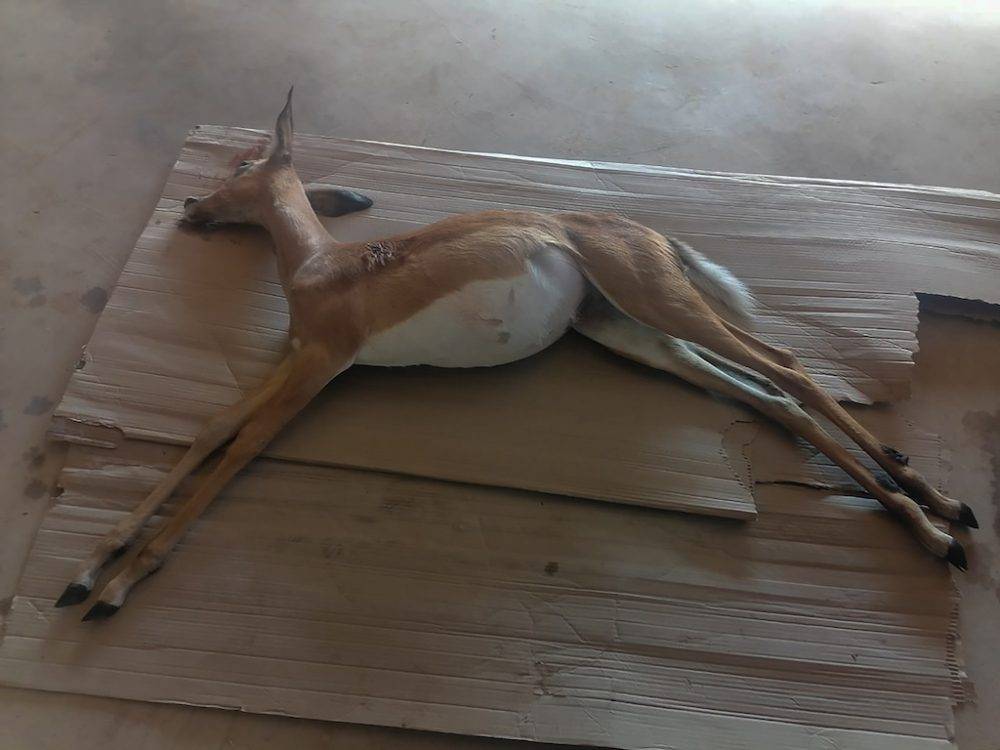
Inside the bushmeat trade
Prosecuting poachers involved in the bushmeat trade is not easy. “Because of the nature of snaring, it is challenging to catch poachers red-handed and to present adequate evidence to link them to the crime and successfully prosecute them,” said EWT’s Leeuwner.
Evidence of the trade is easy to come by on the fringes of the national park. At a roadside stall near Hazyview, about 15km from Kruger’s Phabeni gate, Oxpeckers saw an adult impala that appeared to have been snared the night before laid out on a stretch of cardboard. Blood around its neck told the story of how it died.
Forty-nine-year-old, Theo Tshepo (not his real name) of Nyongane village said he paid R800 for the carcass from his regular supplier. “This whole impala feeds my family of five for more than a month,” he said, while if he had bought it from a butcher in Hazyview, he’d have had to fork out R150/kg.
Tshepo, who makes his living transporting goods in his bakkie in and around Hazyview, said he sometimes carried poached game. “Being unemployed can lead to recruitment by poaching syndicates. We are easy targets,” he said.
He said SANParks often held imbizos, community dialogues that seek to raise awareness about the benefits of wildlife. In these meetings, people complained that the park did not sell game meat to them, said Tshepo. “But some rangers sell the meat to our suppliers who then sell the meat to the community,” he added.
To understand the complexities of this bushmeat trade, Oxpeckers spoke to several other people from various villages along Kruger’s western boundary.
Vusi Nyathikazi, 41, from Majika village, said his family had depended on bushmeat for over a decade. After his retirement a few years ago, Nyathikazi said he still could not afford to buy bushmeat regularly. As his suppliers do not always have the meat, he buys in bulk when it’s available.
“It’s very cheap to buy from poachers; I normally spend R100 per kg, depending on the animal portion,” said Nyathikazi.
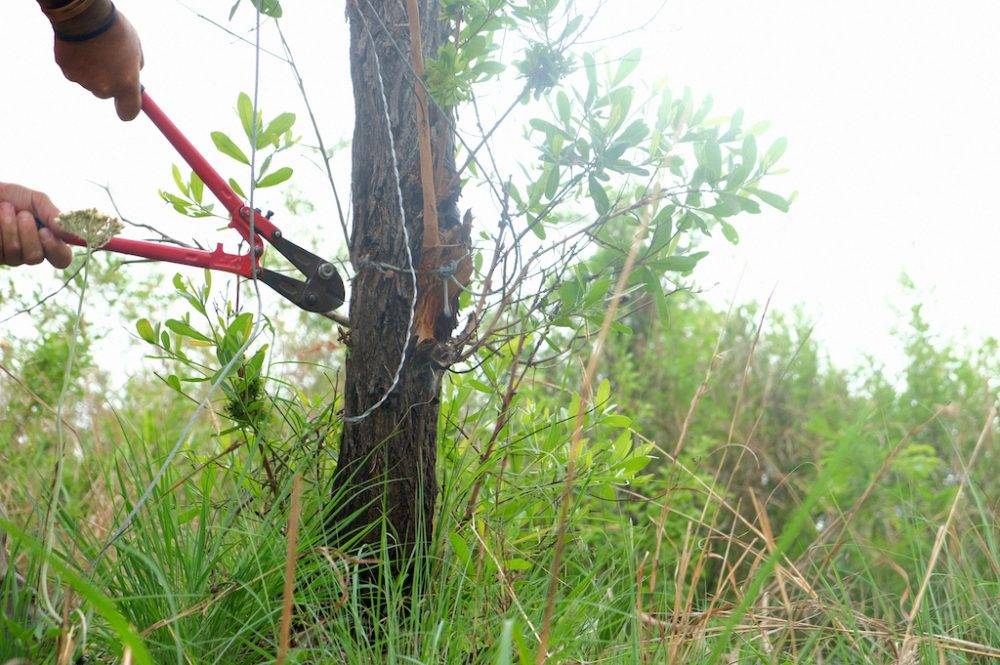
Cultural uses
Without disclosing whether his suppliers are poachers, 45-year-old Denise Kabelo (not his real name), a part-time builder in Nyongane village, said in addition to buying affordably priced bushmeat, he sometimes buys leopards and cheetahs for their skins and bones to sell to sangomas in the area.
A traditional healer, (name withheld), confirmed that people linked to poaching brought animal parts to her. “I buy it if I specialise in that animal product for traditional healing. If not, I point them to others who use those parts.”
She said people involved in poaching were good at marketing animal parts, selling directly to muthi markets as far afield as Faraday and Kwa Mai Mai in Johannesburg.
She acknowledged the devastating long-term consequences poaching could ultimately have, and to that end had set up a nonprofit organisation, Nature Speaks and Responds, to engage with SANParks, the department of forestry, fisheries and the environment, and other agencies to help find sustainable solutions for traditional healers.
Social context
According to SANParks data, the surge in snaring is most serious in the Pafuri region on the far northern boundary of the park, where the southeastern border of Zimbabwe meets the western boundary of Mozambique; Pretoriuskop and Stolsnek in the south-western part of the park; and the Skukuza region the south-eastern side of the park, near Mozambique.
At a webinar earlier this year as part of the Khetha journalism project, SANParks general manager for sustainability Danny Govender said the history of the area was part of the reason for the complex relationship between the park and its immediate neighbours. Feelings of disenfranchisement, said Govender, did not help the conservation cause, driving many people to poaching and snaring on land that once belonged to their forebears.
And today, close to three million South Africans living near Kruger’s 650km western boundary are struggling to make ends meet, she added. Joblessness rates exceed the national average and social services are thin on the ground. All of this exacerbates the challenges faced in winning broad community support for conservation efforts, the webinar concluded.
Many conservationists also point out that an increase in meat poaching coincided with the Covid-19 pandemic, which brought widespread economic hardship. In a region economically backboned by safari tourism, and the direct and indirect jobs it creates, the pandemic had far-reaching consequences, said Govender.
It devastated tourism, a mainstay of the Lowveld economy. Not only jobs in the sector were lost, so were eyes and ears: with fewer tourists about, poachers ran less risk of being detected. And as people ventured into wild spaces in search of resources, the likelihood of encounters with wildlife increased. This created further opportunities for poaching, she said.
“Although SANParks never decreased patrol efforts or ranger presence during the pandemic – they were essential services that continued unabated — the pandemic highlighted personal and household vulnerability to shocks, and the coping mechanisms that people use to survive,” said Govender.
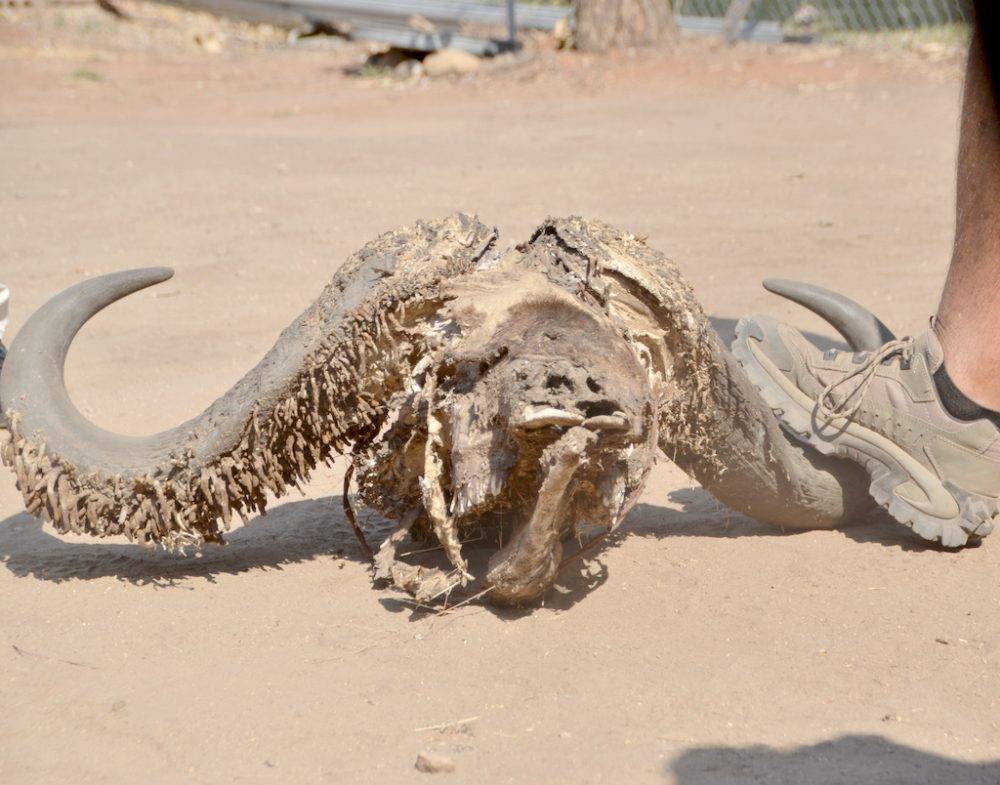
Grim realities
For dedicated rangers and conservationists, the grim realities of snaring strike home hard. Efforts to save snared animals have become a challenge and a vast majority of animals caught in snares often rot away without being removed, said state veterinarian Dr Louis van Schalkwyk.
This is because many non-targeted species get caught in snares. “The ones we save — mostly carnivores — are not necessarily the intended targets. As much as we try to save and treat the snared animals that are found alive, the injuries are mostly so severe that they have zero chance of survival.” Many die slowly from septicaemia caused by the wounds, he said.
SANParks chief executive Hapiloe Sello told parliament’s environmental portfolio committee last November about a dramatic increase in the numbers of buffalo being targeted and the loss of six Kruger elephants killed by snares. The costs involved in removing snares from elephants included an average of R20,000 to fly a helicopter to the site and another R20,000 to return to base, she said.
New poaching trends are also emerging, not only in the species targeted but also in the methods used. For example, earlier this year, gin traps that had killed a buffalo and three impala were discovered in the far northern Pafuri section adjacent to Zimbabwe. Gin traps are steel-jawed devices with spring-loaded mechanisms that capture animals by snapping shut on their legs or heads, causing bone-crushing injuries, lacerations and amputations.
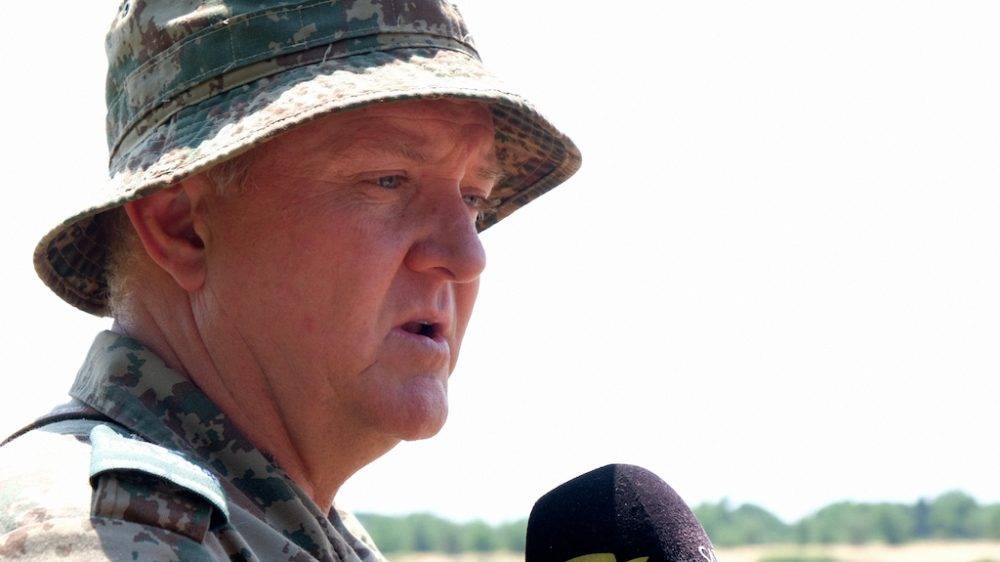
Rangers’ insights
On a visit to the Pafuri section of the park, Oxpeckers gained insight into how poaching dynamics vary from one region to the next.
We first visited the Makuleke Contractual National Park, which is managed and owned by the local community. Located near the banks of the Limpopo River, adjacent to Zimbabwe and Mozambique, the conservancy is considered a jewel of northern Kruger because of its rich diversity of flora and fauna.
“We, the Maluleke people, have a deep cultural connection to the land,” said park coordinator Aubrey Maluleke, who plays a vital role in co-managing the Makuleke Contractual National Park. In recognition of his contributions, he was recently nominated for profiling as a Khetha Game Changer at a gala event attended by more than 56 leading conservationists in the Greater Kruger area. Maluleke’s nomination was based on his commitment to educate local residents about the benefits of ecotourism and effective environmental management.
We also interviewed Pafuri section ranger Richard Sowry on the banks of the Limpopo River, from where one can get a glimpse of Zimbabwe’s Sengwe communal lands, situated near Gonarezhou National Park.
“In the Sengwe community, people live hand to mouth, relying on what they can grow and produce themselves,” said Sowry. “For many poaching becomes a daily means of survival.”
Sowry pointed out over the flood plain to an illegal crossing point frequently used by poachers from Zimbabwe. He recounted a poignant case of a Zimbabwean who was arrested numerous times alongside his 13-year-old son for poaching in 2021. The father is serving a jail term for crossing into South Africa to poach for food, evoking empathy from Sowry. He keenly understands that, unlike the criminal syndicates, many people are driven into poaching by necessity.
Maluleke said severe drought and low rainfall in the region had fuelled poaching, leading to increased incursions from Zimbabwe, with more and more people caught with dried bushmeat intended for home consumption. He noted that the absence of a fence at the Sengwe Corridor, which links to Gonarezhou National Park, made border crossings relatively easy, contributing to a rise in snaring.
As part of his work, Sowry meticulously collects data to assess the effects of poaching in the Pafuri region. From 2022 to early 2024, he recorded the number of carcasses found, snares removed, poaching methods employed, target species, and the estimated value of the animals affected.
Sowry said that in Pafuri 1,720 snares had been removed in 2022, and 3,364 in 2023. But there had been a recent turnaround, he added: between April and June 2024 only 16 snares had been removed in his section, indicating, perhaps, that poachers had shifted activities into other areas where detection was more difficult.
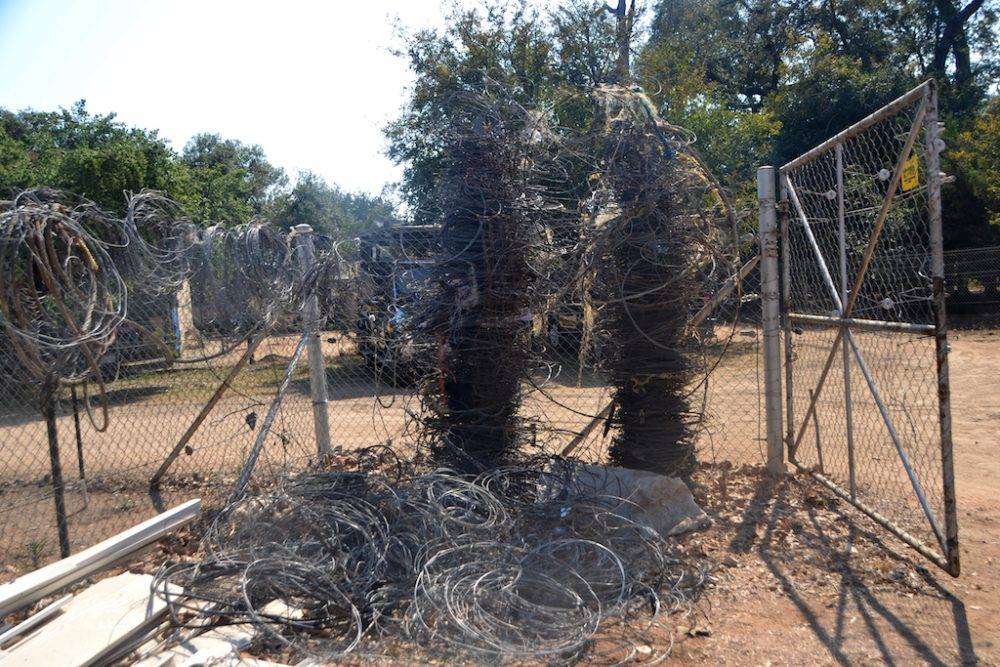
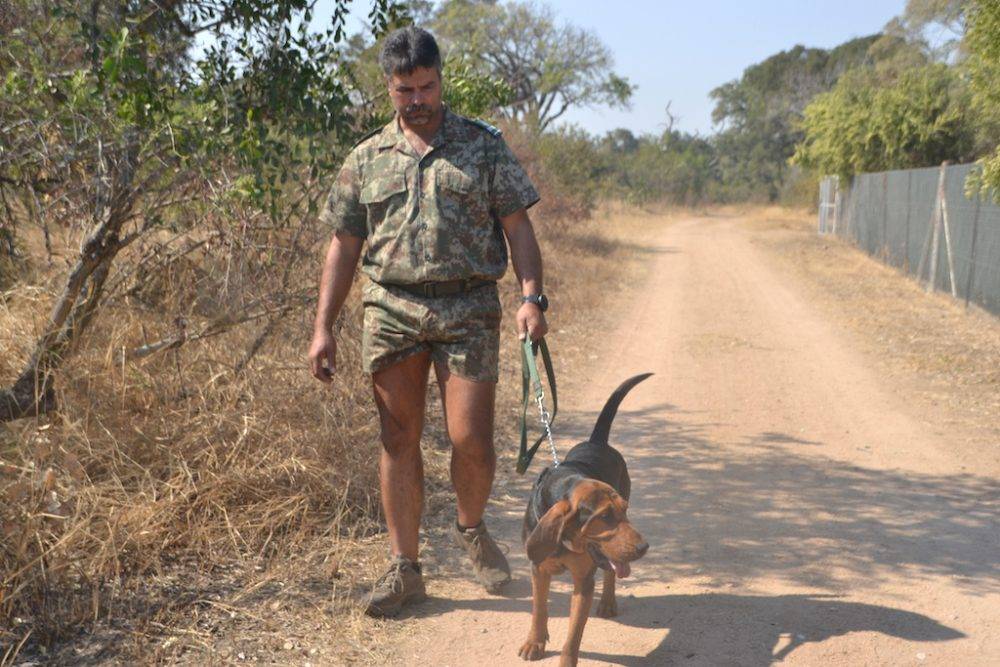
Snare mitigation
In September 2024 the EWT co-hosted an inaugural Snare Mitigation Symposium with the Cape Leopard Trust, the Department of Forestry, Fisheries and the Environment, SANParks and the South African National Biodiversity Institute. The event brought together 140 leading conservationists.
Proposed solutions included centralised reporting and monitoring to understand the extent of the problem; further research on drivers and alternative livelihood solutions, as well as technological advances to improve snare detection and data collection; more cohesive legislation to address snaring and other wildlife crimes; enhanced teamwork and collaboration between the state, private sector, and civil society; and community-led solutions to help address snaring, ensuring diverse, inclusive and tailored approaches.
Govender expressed optimism about the symposium’s resolutions, but cautioned that translating these into meaningful change presented significant challenges. She emphasised that disrupting entrenched poaching networks necessitates not only decisive action but also a behavioural shift that addresses the complex relationship between livelihoods and illegal wildlife activities.
You can track prosecutions and court cases involving environmental crimes via the Oxpeckers #WildEye Southern Africa tool here.
This investigation by Oxpeckers associate photojournalist Dianah Chiyangwa was produced in collaboration with Roving Reporters and Jive Media Africa and is part of the 2024 Khetha Story Project. Supported by the WWF-South Africa and funded by USAID, the initiative aims to improve wildlife crime reporting in the Greater Kruger.

